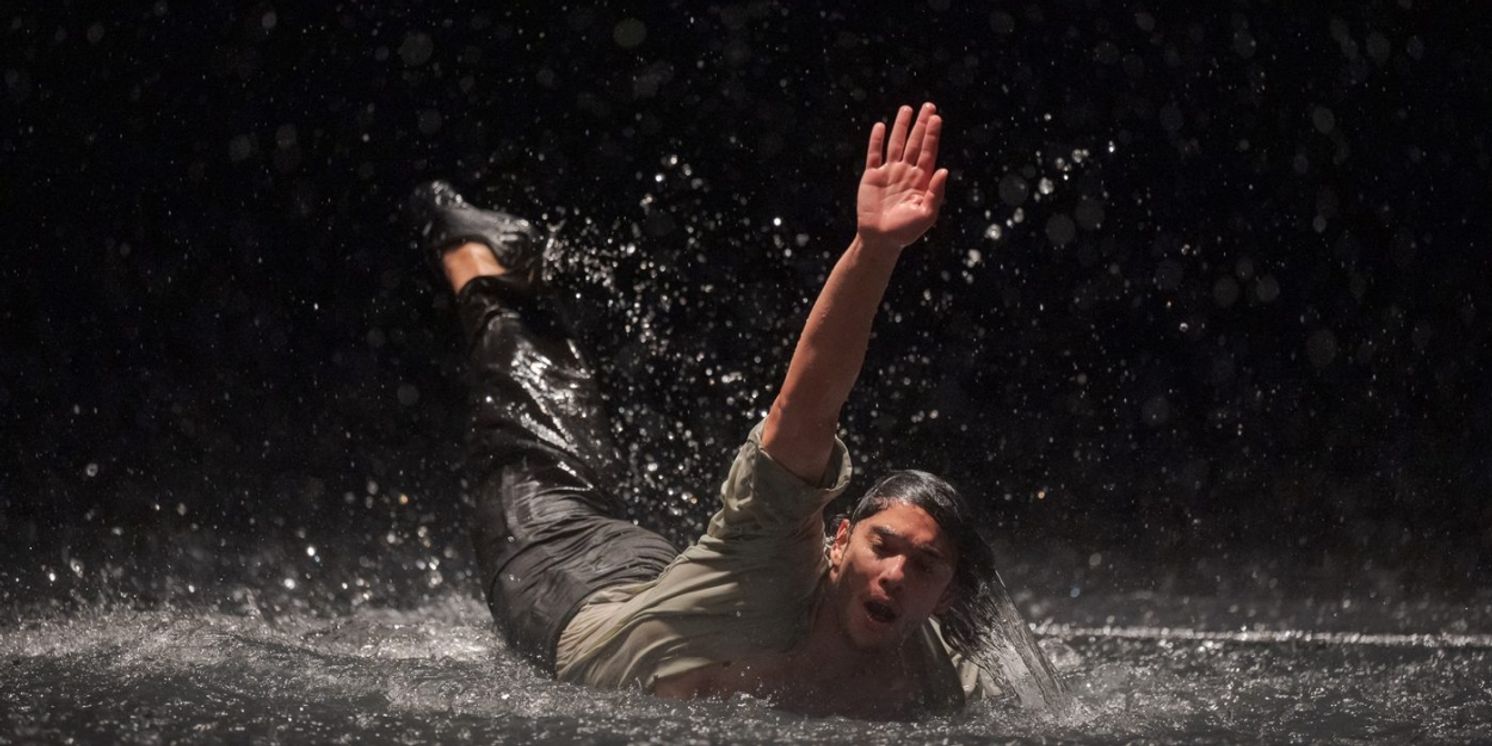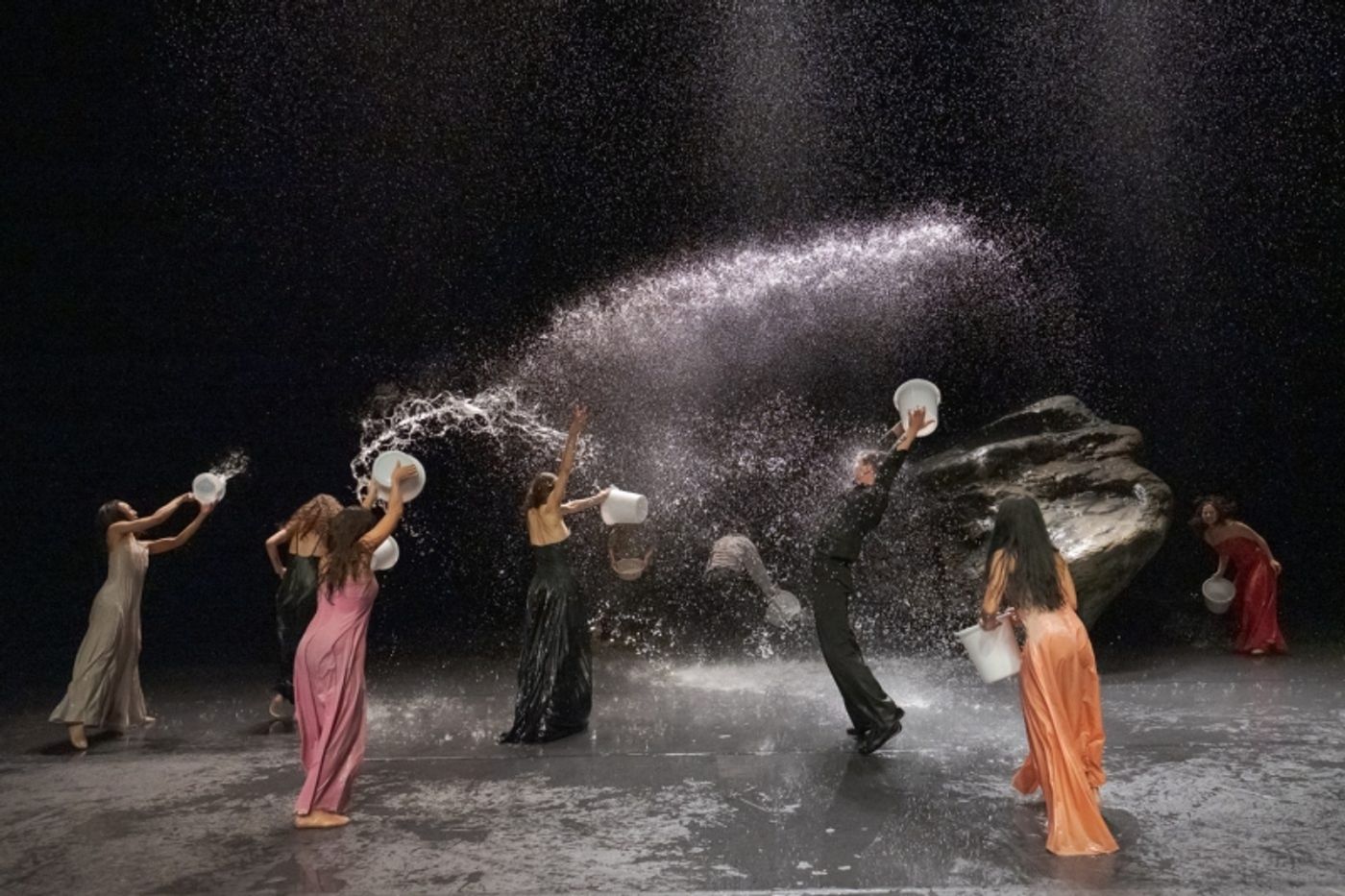Review: VOLLMOND, Sadler's Wells
Pina Bausch's wet and wild work is back 12 years on

 ‘Vollmond’ translates as ‘Full Moon’ in English. A time of mischief, of transgression, of licence. Danger can hide in its shallow shadows; so too opportunity. Night isn’t quite night, but it definitely isn’t day either - it is a liminal space that demands action before its magic withers with its heatless shine.
‘Vollmond’ translates as ‘Full Moon’ in English. A time of mischief, of transgression, of licence. Danger can hide in its shallow shadows; so too opportunity. Night isn’t quite night, but it definitely isn’t day either - it is a liminal space that demands action before its magic withers with its heatless shine.
Back in 2006, that title may have come late in Pina Bausch’s creative process, so it acts more as a synthetic term, pulling together material developed collaboratively at Tanztheater Wuppertal, with long term associate, designer, Peter Pabst, to the fore. On a bare stage, with - initially - just a giant boulder in sight, it gives us something to hold on to for a two hour high speed rollercoaster ride.
Soon dancers emerge, some casually, some flirtatiously, some anxiously. Scene after scene pile on top of each other, a collage of sex and violence, of desire and disappointment, of prose and poetry. It’s funny too, the vicissitudes of life laid bare.

A woman trains a man in the swift unclasping of a bra (it only really counts when you can do it one-handed you know); another woman attempts to escape and is continually pulled back as she fails to leap to freedom; the boys eye the girls and the girls eye the boys.
And it rains. Sheets of water fall on to the stage, rain as I’ve seen in Scandinavia or Scotland but seldom in the protected South-East corner of England. Dancers are soaked to the skin, blinking away the water from their eyes before it’s supplemented by tears. Some go swimming as a moat coalesces beneath the boulder, now less a brooding menace and more a potential refuge in a drowning world. The water is elemental, atavistic, a direct line to the motivation for man’s decision that founded civilisation - to retreat to the caves for shelter in common cause.
Meanwhile bodies, varying in height if not in BMI (there’s a higher rating in my little finger than combined for the six men and six women on stage) come and go with the elegance and fizz of youth. Little time is spent collectively (save the chaotic joy of the closing scene), most dances individual or in pairs.
Often there’s a sense of desperation, of the full moon waning so opportunities must be taken. At other times, say in swimming costumes, there’s a leisurely ease in each others’ company. Frequently, there’s power at play, with a touch of the dominatrix in the women and in the physical coercion of the bigger, stronger men.
In contemporary dance, you don’t go looking for a narrative, you wait for the impressions to come to you. In that way, it has much in common with the paintings of Jackson Pollock or Mark Rothko and much less with those of Théodore Géricault or Gustave Courbet. You invest the mental energy and the time and the work finds you.
Over the last 43 years, 20 works by Bausch have been staged at this venue, Vollmond joining those with multiple appearances after its premiere in 2013. It’s not difficult to see why. She was a crowdpleaser, an abstract impressionist with movement and beauty not canvas and paint. She pokes you with an urgency that both irritates and energises - there are no longeurs here!
As usual with dance, on leaving that drenched world, I felt physically uncomfortable (my feet heavily hit the floor, theirs had glided weightless across it) but I also felt the joy one finds in knowing that there’s a place beyond the mundane, beyond (on Valentine’s Day) the corporate exploitation of that desire and desperation we had witnessed, beyond my own deteriorating body moving through space in my seventh decade.
It was a thought I filed away for a rainy day.
Vollmond is at Sadler's Wells until 23 February
Photo images: Martin Argyroglo
Reader Reviews
Videos

